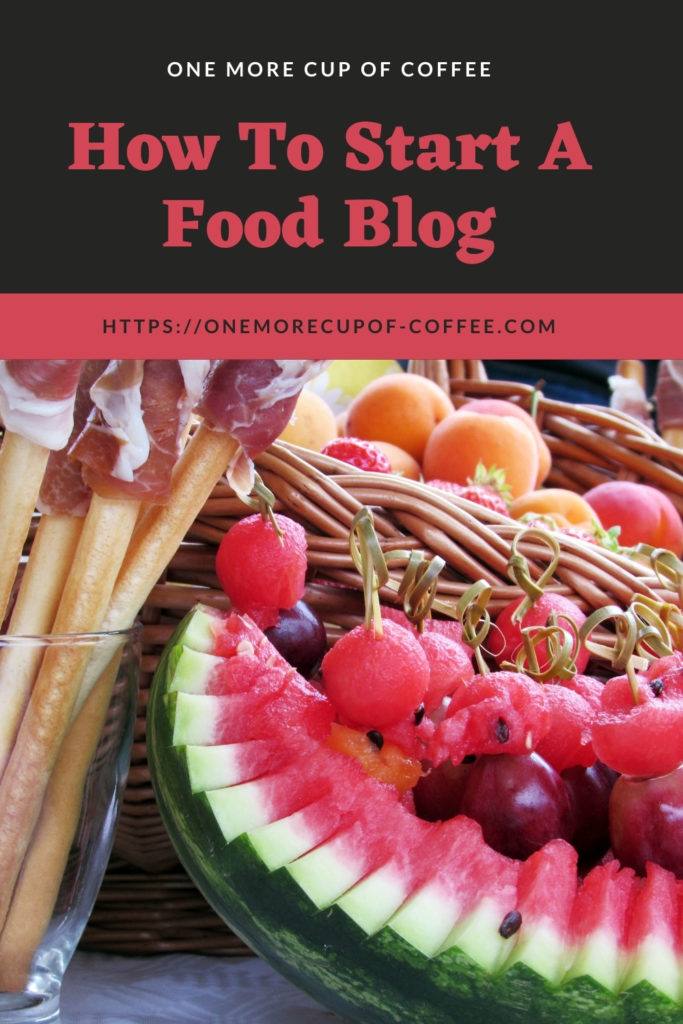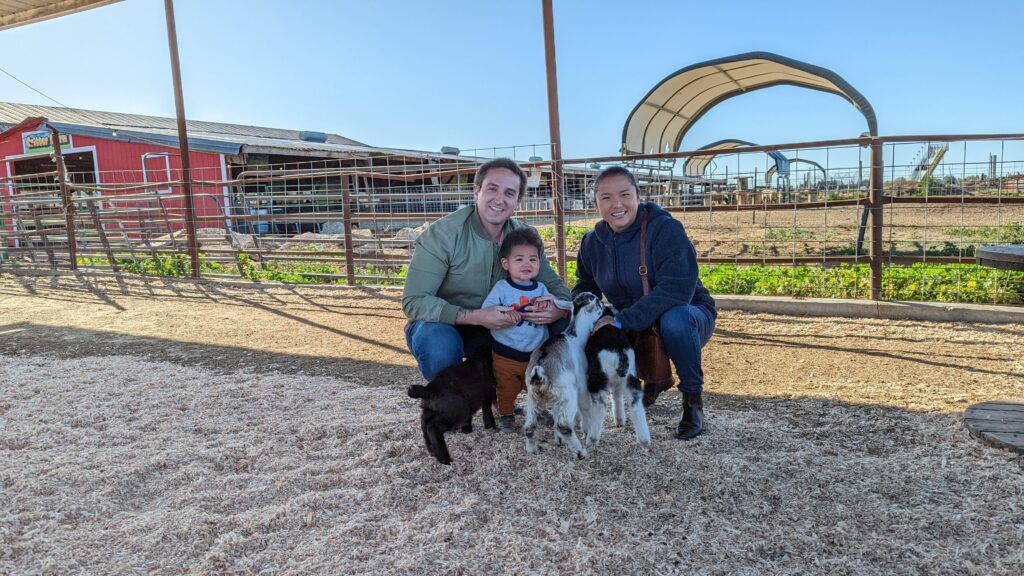
Are you passionate about all-things gastronomy? Have you ever whipped out your phone to snap a shot of your meal before ever stealing the first bite in order to preserve the food’s aesthetic?

Are You Ready To Work Your Ass Off to Earn Your Lifestyle?
Are you tired of the daily grind? With a laptop and an internet connection I built a small website to generate income, and my life completely changed. Let me show you exactly how I’ve been doing it for more than 13 years.
If you love tossing ingredients together and sharing that joy with others, you may have what it takes to be a food blogger. The question is though, how do you start a food blog?
Food bloggers are some of the top earners in the entire blogging industry. Blogging is highly profitable; in fact, now more than ever.
People flock to the web in search of answers to their questions. And bloggers have become one of the top resources to provide those answers. Bloggers build trust among readers, by delivering the best advice and tips and providing value. Extra brownie points go to the bloggers who share their stories, build a connection, and foster a community (any banana foster fans here?).
Food blogs come in all shapes and sizes and cater to a wide audience with diverse tastes. There are general food blogs featuring recipes of all kinds; niche food blogs that delve into sharing about specific food groups; and food blogs that focus on one tasty treat. In this article, we’re taking a look at the basic concepts you’ll need to know to start a food blog.
How To Start A Profitable Food Blog Business
Pick A Brand & Domain Name For Your Blog
Picking a short and sweet brand and domain name is the first important step in starting a food blog. With thousands of food websites out there, it will take all your creative juices to flow to come up with something new and memorable. There are many food blog name ideas to get inspired by, but remember to keep it simple, attractive, and cohesive with your brand identity.
The name you choose for your brand and domain should try to identify with your niche within food blogging. Will the food blog be all about healthy recipes? Or about the most dazzling drinks? Because food blogging is so general, you’ll definitely want to narrow down your focus topic by picking a niche.
There is always the possibility of expanding your focus with your food blog. So with that said, another option is to not limit yourself with your brand and domain name by using something too specific.
The most important thing to remember in this step is what you hope to accomplish with your food blog. If it’s to share with others your quirky kitchen tips, then use that to your advantage and personalize your recipe guides and other articles to match your style.
Food blogs rely on a bit of storytelling and personal characterization, anyway. Readers want to know more about the cook in the kitchen! If you focus on providing personalized value, it won’t really matter what your brand or domain name is – your audience will know to come to you for your unique content.
That’s the case for Not Without Salt, a food blog by Ashley who not only shares her best sweet and savory recipes but who also uses her blog to recount her life as a mother of three. All her foodie articles start off with a personal story and readers just keep coming back for more.
The couple who own the food blog Love and Lemons is another good example of how subtle branding can bring your website together. The brand and domain is “Love and Lemons” and the tagline is, “a food blog with fresh, zesty recipes” (just like a lemon!). They write about the plant-based and vegetarian recipes they create in their kitchen alongside their two Shiba pups.
Build The Blog
After you have a clear idea of your food blog’s brand name, now it’s time to claim your space on the internet. Like any yummy food recipe, there are three key ingredients to building a blog:
- Domain
- Hosting
- CMS (website builder)
Hopefully, you checked if the domain name you selected for your food blog was already available. If not, now’s the time to check. And if so, now’s the time to purchase the domain name which is essentially your URL (i.e. myfoodblog.com).
The domain name is what will show up under article titles in search engines and at the top of the search bar when someone is browsing your website. You can buy a domain name through a third-party provider or through a hosting provider (recommended),
A hosting provider is who you will pay to host your website on their servers. After all, your food blog needs to be “stored” somewhere! The most popular public hosting provider among bloggers is Bluehost.com. With Bluehost’s cheapest plan, your website will be housed on a shared server along with other websites. This brings the monthly cost down to an affordable $3-9 per month, but it’s not the fastest option if your site grows quickly.
On the other hand, you have Kinsta which is a managed hosting provider specifically for WordPress.org websites. Choosing Kinsta as your host won’t come cheap (minimum $30/month), but they offer personalized service and lightning-fast speeds. It’s what I use for all my high-traffic sites.
Finally, the last step for building a blog is deciding which platform to use. WordPress is by far the most popular and obvious choice. I personally recommend WordPress as the website builder of choice for starting an affiliate blog. In the below video, I explain three main reasons why you should use WordPress for building a successful food blog.
How To Grow Your Food Blog
Growing a food blog is just like trying to bake a cake. If you don’t have the right ingredients, or add in too much of this and not enough of that, then your cake will come out very different than how you envisioned it. It’s the same with growing a blog – if you don’t know what ingredients to put together you can get lost and feel overwhelmed and defeated.
That’s why one of the best return on investments you can make is to simply learn – learn affiliate marketing and learn good SEO.
Get Free Traffic From Google
Every day, there are millions of people typing search queries about food. That means there’s a mecca of keywords just waiting to be mined.
That’s where knowledge of how to do keyword research comes in. With keywords, you can write articles that address certain questions or keywords that people are searching the answer for. If you can write an article about a recipe that matches that query, then there’s a chance at your article ranking on Google’s first page which will bring traffic to your food blog.
Not every one of your masterpiece articles will rank, though, which is why you have to keep a consistent publishing schedule. Publishing just once a month isn’t going to cut it if you want to really grow your food blog.
Apart from the time you put in to personally create recipes, photograph the results, and write up a blog about it, you will also need to spend your time wisely by participating in food blogging groups and growing your social presence.
Networking & Social
Networking is an essential part of the business of blogging – no matter the topic. Engaging in your community will also attract new followers to your content. You can also learn new techniques, share in the struggle with like-minded bloggers, and get backlinks from other food bloggers – all while learning heaps of invaluable information all the time!
Food blogging, if you haven’t noticed, is also extremely visual. In fact, most people who hop on a food-related article are there for the photos – not the writing. That means you’ll want to seriously invest in quality footage for your blog, fire up that foodie Instagram account, and pin your highly-aesthetic food photography and curated content on Pinterest.
P.S. You’ll want to make sure your “style” shines through in your photos. The goal is to make people drool over your content (or at least have thoughts about licking their laptop screen). The goal is to make others feel inspired by your food so they use your recipe, spend time on your website, and build that connection with you and the value you just provided for them.
So get out your kitchen scale and practice, because growing a food blog is all about balance!
How To Make Money From Your Food Blog
Can you really make money with a food blog? Yes! The top food bloggers are earning a whopping $50-100k per month alone. It is definitely possible to blow up your earnings with a successful food blog. Here are the three core ways that food bloggers earn money.
Affiliate Marketing
Affiliate marketing is one of the best ways to monetize a food blog. Affiliate marketing works by tracking user clicks on affiliate links on your site. When a user clicks through and makes a valid purchase, you earn a commission. And because the food blogging industry is so enormous, there are plenty of food affiliate programs to take advantage of.
Writing with affiliate marketing in mind is a long-term, highly-profitable strategy. There will always be a need for product reviews, but that’s not the only type of article that is suitable to place affiliate links. You can even include affiliate links in food articles, fun top 10 lists, or detailed “how to make X” recipe guides.
Display Ads
Advertising is a less hands-on approach to monetizing a food blog, but a big earner at that. You might be thinking that display ads are annoying to users, but actually most people are used to them and don’t mind them. So don’t be afraid to profit from this passive income stream! I make a couple extra grand each month thanks to my display ads.
You can read all about my display ad earnings in my Mediavine income report. The food blogging industry also tends to have high RPMs because it’s such a competitive niche, although results may vary per blog.
Sponsored Content
Have you ever read a food blogger’s post that starts or ends with, “This article was sponsored by X”? Making money with sponsored content is another way to monetize your food blog. Although it’s less reliable than affiliate marketing, and certainly more work than display ads, you can earn a pretty penny writing sponsored articles. That said, it will take time before you can “rely” on this income stream to sustain your life.
Sponsored content usually comes randomly unless you’re proactive about finding paid sponsorships. If you do happen to get a sponsored gig, make sure to negotiate the price based on the value you’re providing. Nagi from Food Bloggers Central talks about determining your rates as a food blogger. As there’s no “industry standard” this can be hard to pinpoint, but she has a useful math calculation to get you started.
So what types of sponsored content are there? Food bloggers will often get sponsored by companies making recipes using household kitchen items and tools, or companies specializing in a certain type of food/drink or food niche (i.e. organic powders). You also don’t need to grow a huge following before landing sponsorships. As long as you have a loyal following and the right audience – you can market your traffic to any sponsor.
Why Food Blogging Is An Evergreen Business Opportunity
Food blogging was one of the first blogging niches from 2000-2010 to really popularize the blogging industry as a career path. Food bloggers really set the bar for how someone could turn a passion into a financial empire. There are thousands of reasons why food blogging isn’t going anywhere anytime soon – but the main one being that people will continue to seek information via online resources.
Food blogs are evergreen because food is a commodity that everyone needs. Basically, it’s never going “out of style.” There will always be people who turn to Google in search of the next best family recipe, holiday meal, and so on.
From gourmet food, to smoking exotic meats, to vegan or gluten-free cupcakes, or even fast food reviews, there are hundreds of focus areas to turn your passion for food blogging into a long-term, sustainable business.
It's Time To Take Action!
You've read this far. What's holding you back?
Earning consistent income from a blog is not some kind of crazy, pie in the sky dream anymore. Millions of people start and run their entire business from a laptop.
The secret is out. The trail has been blazed. Just follow the steps and make it happen.
Do you want it bad enough to make it a reality? Stop reading and start doing. Here's how to build a blog and make money, even if you have no previous experience.

Nathaniell
What's up ladies and dudes! Great to finally meet you, and I hope you enjoyed this post. My name is Nathaniell and I'm the owner of One More Cup of Coffee. I started my first online business in 2010 promoting computer software and now I help newbies start their own businesses. Sign up for my #1 recommended training course and learn how to start your business for FREE!

 Top 10 Diamond & Gemstone Affiliate Programs To Turn Colorful Rocks Into Green Paper
Top 10 Diamond & Gemstone Affiliate Programs To Turn Colorful Rocks Into Green Paper
Leave a Reply